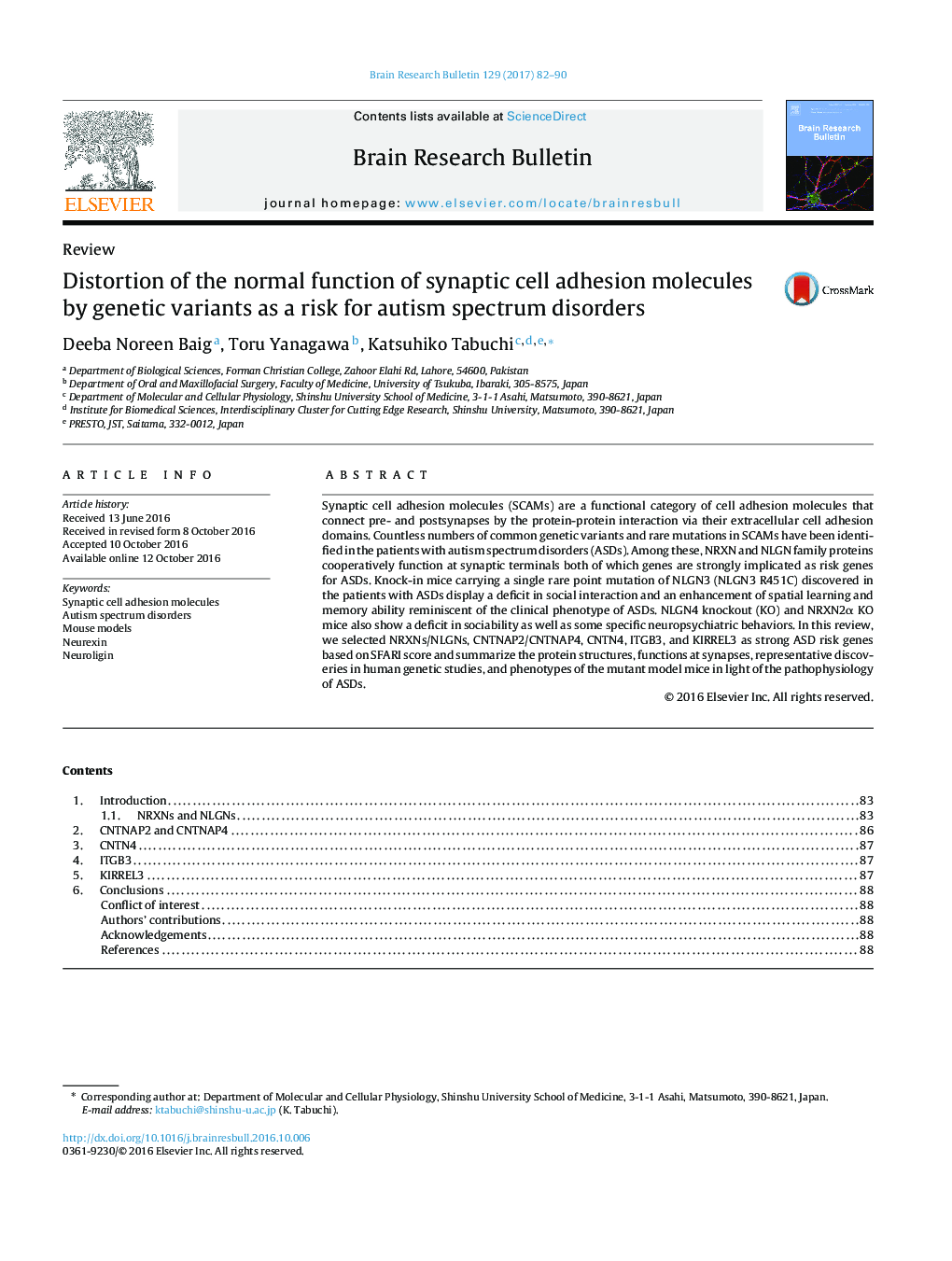| Article ID | Journal | Published Year | Pages | File Type |
|---|---|---|---|---|
| 5736348 | Brain Research Bulletin | 2017 | 9 Pages |
â¢SCAMs have been implicated as risk genes for autism spectrum disorders ASDs.â¢Degree of risk for ASDs are different among each genetic variant.â¢List and summarize the ASD associated SCAMs based on the SFARI GENE scores.
Synaptic cell adhesion molecules (SCAMs) are a functional category of cell adhesion molecules that connect pre- and postsynapses by the protein-protein interaction via their extracellular cell adhesion domains. Countless numbers of common genetic variants and rare mutations in SCAMs have been identified in the patients with autism spectrum disorders (ASDs). Among these, NRXN and NLGN family proteins cooperatively function at synaptic terminals both of which genes are strongly implicated as risk genes for ASDs. Knock-in mice carrying a single rare point mutation of NLGN3 (NLGN3 R451C) discovered in the patients with ASDs display a deficit in social interaction and an enhancement of spatial learning and memory ability reminiscent of the clinical phenotype of ASDs. NLGN4 knockout (KO) and NRXN2α KO mice also show a deficit in sociability as well as some specific neuropsychiatric behaviors. In this review, we selected NRXNs/NLGNs, CNTNAP2/CNTNAP4, CNTN4, ITGB3, and KIRREL3 as strong ASD risk genes based on SFARI score and summarize the protein structures, functions at synapses, representative discoveries in human genetic studies, and phenotypes of the mutant model mice in light of the pathophysiology of ASDs.
